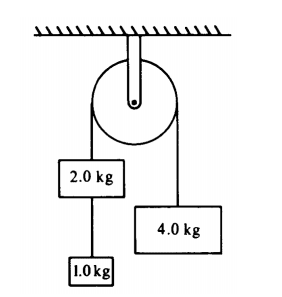
Three blocks of masses \( 1.0 \, \text{kg} \), \( 2.0 \, \text{kg} \), and \( 4.0 \, \text{kg} \) are connected by massless strings, one of which passes over a frictionless pulley of negligible mass, as shown above. Calculate each of the following.
Two people, one of mass \( 88 \) \( \text{kg} \) and the other of mass \( 55 \) \( \text{kg} \), sit in a rowboat of mass \( 70 \) \( \text{kg} \). With the boat initially at rest, the two people, who have been sitting at opposite ends of the boat \( 3.1 \) \( \text{m} \) apart from each other, now exchange seats.
A race car traveling at a constant speed of \( 50 \) \( \text{m/s} \) drives around a circular track that is \( 500 \) \( \text{m} \) in diameter. What is the magnitude of the acceleration of the car?
A car travels at a constant speed around a circular track whose radius is \(2.6 \, \text{km}\). The car goes once around the track in \(360 \, \text{s}\). What is the magnitude of the centripetal acceleration of the car?
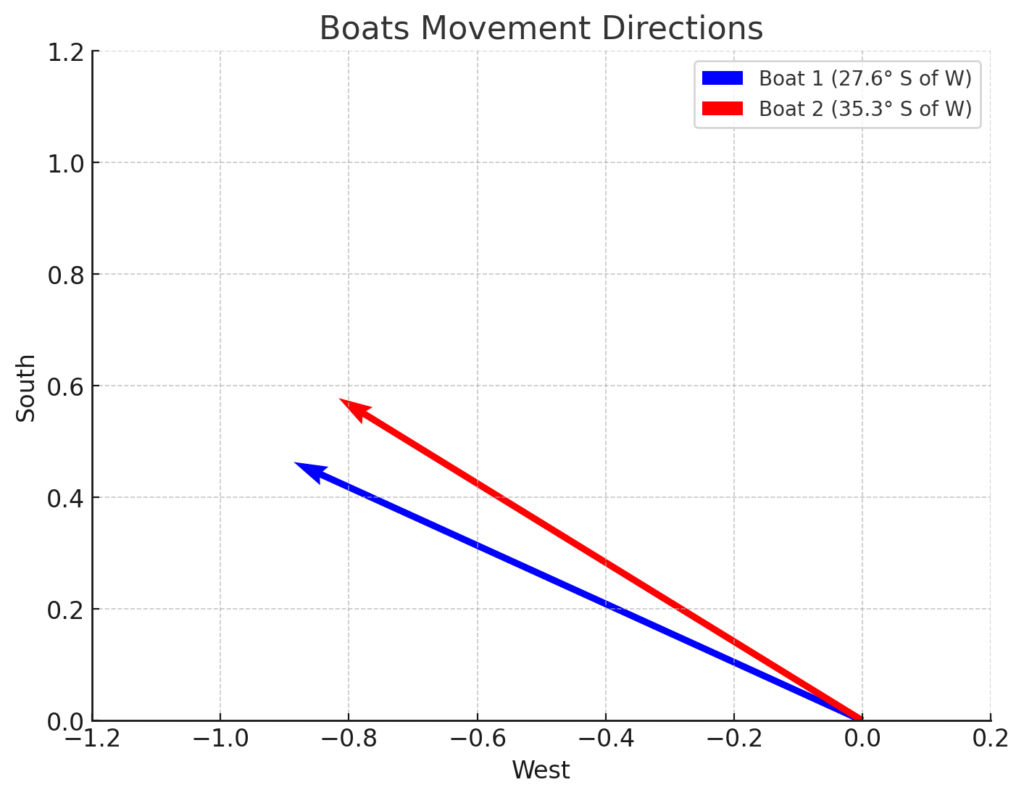 Two racing boats set out from the same dock and speed away at the same constant speed of 101 km/h for half an hour (0.5 hr). Boat 1 is headed 27.6° south of west, and Boat 2 is headed 35.3° south of west, as shown in the graph above. During this half-hour calculate:
Two racing boats set out from the same dock and speed away at the same constant speed of 101 km/h for half an hour (0.5 hr). Boat 1 is headed 27.6° south of west, and Boat 2 is headed 35.3° south of west, as shown in the graph above. During this half-hour calculate:
A block with a mass of \( 4 \) \( \text{kg} \) is attached to a spring on the wall that oscillates back and forth with a frequency of \( 4 \) \( \text{Hz} \) and an amplitude of \( 3 \) \( \text{m} \). What would the frequency be if the block were replaced by one with one‑fourth the mass and the amplitude of the block is increased to \( 9 \) \( \text{m} \)?
A projectile has the least speed at what point in its path?
The heaviest train ever pulled by a single engine was over [katex] 2 \, \text{km} [/katex] long. A force of [katex] 1.13 \times 10^5 \, \text{N} [/katex] is needed to get the train to start moving. If the coefficient of static friction is [katex] 0.741 [/katex] and the coefficient of kinetic friction is [katex] .592 [/katex], what is the train’s mass?
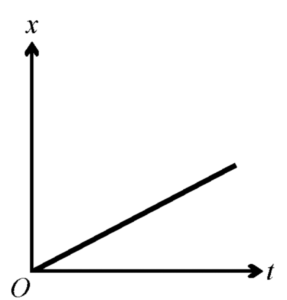
The displacement \( x \) of an object moving in one dimension is shown above as a function of time \( t \). The acceleration of this object must be
A car accelerates uniformly from rest to [katex] 29.4 [/katex] m/s in [katex] 6.93 [/katex] s along a level stretch of road. Ignoring friction, determine the average power in both watts and horsepower ([katex] 1 \text{ horsepower} = 745.7 \text{ Watts} [/katex]) required to accelerate the car if:
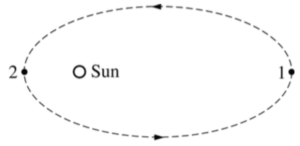
The elliptical orbit of a comet is shown above. Positions 1 and 2 are, respectively, the farthest and nearest positions to the Sun, and at position 1 the distance from the comet to the Sun is 10 times that at position 2. What is the ratio \(v_1\)/\(v_2\) of the speed of the comet at position 1 to the speed at position 2?
By continuing you (1) agree to our Terms of Use and Terms of Sale and (2) consent to sharing your IP and browser information used by this site’s security protocols as outlined in our Privacy Policy.
Quick Start Guide
AP physics 1, AP C, honors and advanced physics students.
Quickly filter questions by units and more.


Here’s guide to using 5 UBQ filters.
GQ = general question, MCQ = multiple choice, FRQ = free response.


Click the check or bookmark button.
Now you’ll be able to see completed or bookmarked questions at a glance!
Answer keys, personalized for you.

Phy will be responsible for grading your FRQs and GQs.
No more copy and pasting. Just solve and snap.
Questions for Mastery
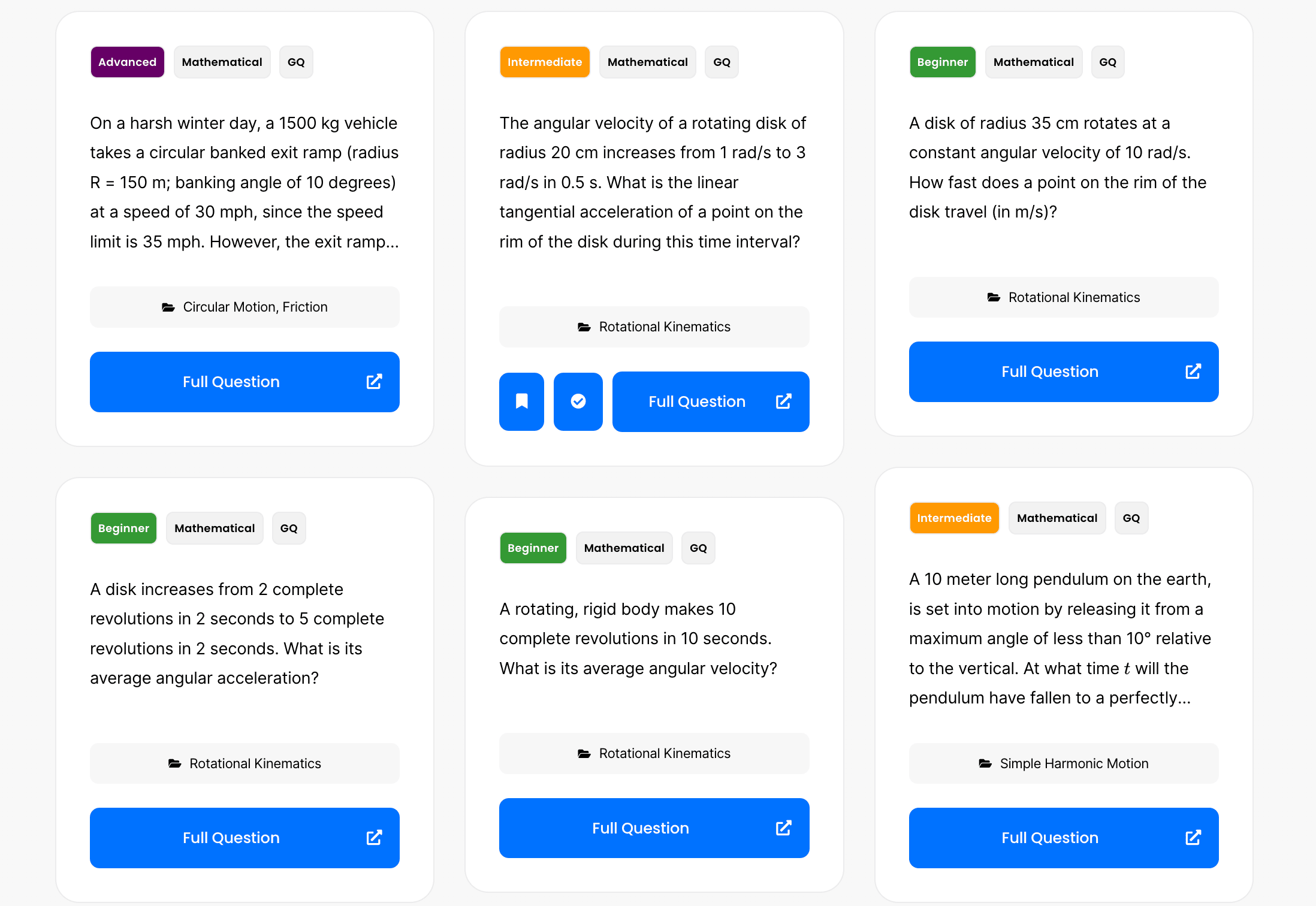
By continuing you agree to nerd-notes.com Terms of Service, Privacy Policy, and our usage of user data.